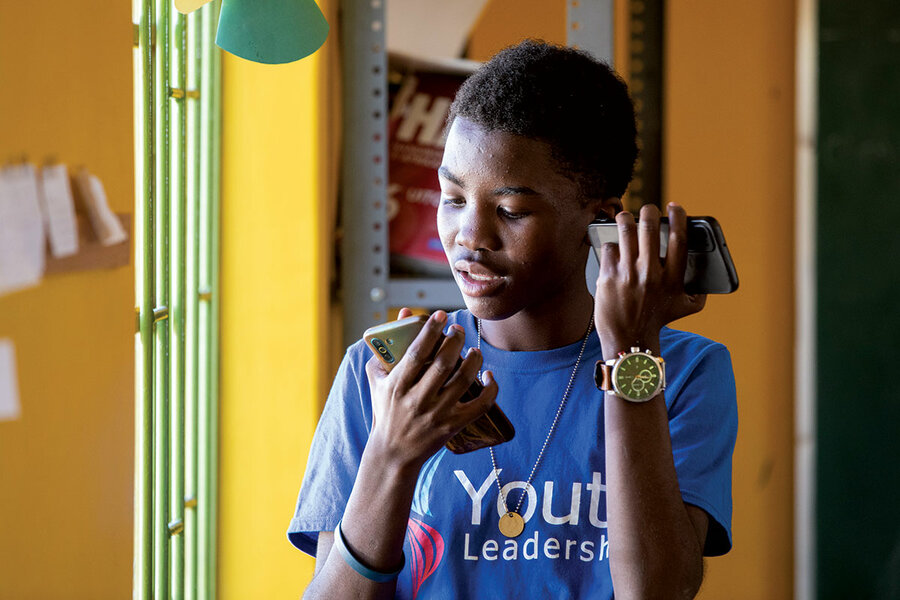When reporting hits home
Loading...
I called my 12-year-old from the road in Dhaka, Bangladesh, after I'd spent several days reporting in Mongla for the third installment of our Climate Generation series. The story focuses on the extraordinary adaptation of a generation whose lives will be uprooted by climate migration. In Mongla, I met a trio of best friends. These girls wowed me – their budding understanding of their rights as children, their simultaneous expression of innocence and wisdom, their creativity and determination. I was drawn to one in particular, Mafiya. She not only is amazing, but also happens to be in eighth grade, like my daughter.
My daughter was in a bad mood the afternoon I reached her on FaceTime. Her father was isolating with COVID-19, and she was frustrated with her science homework. I patiently listened. But when she started fretting about clothes shopping, I grew frustrated myself – jarred by complaints about schoolwork and needing new leggings when so many Bangladeshi children can only dream of studying and some actually make the clothes that North American children wear. The inequalities of the world suddenly felt personal. I had to rush off the phone before I burst into tears on the call.
It wasn't her fault. Many of us learn at an early age not to compare ourselves with others. But when I'm abroad, comparison can sometimes be a natural path toward deeper understanding.
In this case, observing the lives of Mafiya and her peers and comparing that with the way that adolescence is arriving in my house in Canada helps me to contextualize both realities. And sometimes, as on this day, the contrast bowls me over with how unfair the world can be.
As we were conceptualizing this project, Stephanie Hanes and I talked a lot about our own children and climate change in their futures. As I set off to meet others' children, I experienced an intensity of emotion that doesn't compare to what I've felt with any other reporting I've done. Part of it was just sheer workload and the exhaustion of long, hard travel. But it also had a lot to do with the kids.
I started feeling something akin to motherhood – a rooting for them and a reveling in who they are. One image in particular that stays with me is the one featured above, of Petrus Lukas, a 16-year-old Namibian. I met him because he had asked two climate activists to speak to his friends in an informal settlement outside Windhoek, Namibia, on a Saturday morning.
I loved this day on so many levels. The activists had no idea, when they accepted the invitation (to talk for free on their day off), that Petrus was just a kid until they arrived. Petrus looked like a tiny CEO pulling off this event. He clutched two cellphones to his ears, chastising those who were late. The kid is going places.
I've told my daughter about all of these exceptional young people I've met in the past six months. I try never to compare but to impart the good and inspiration that I've learned from Mafiya, Petrus, and all the rest I've met along the way.






